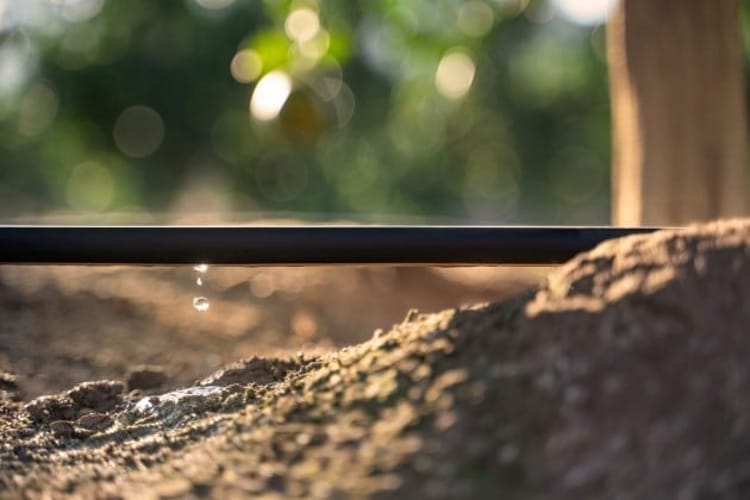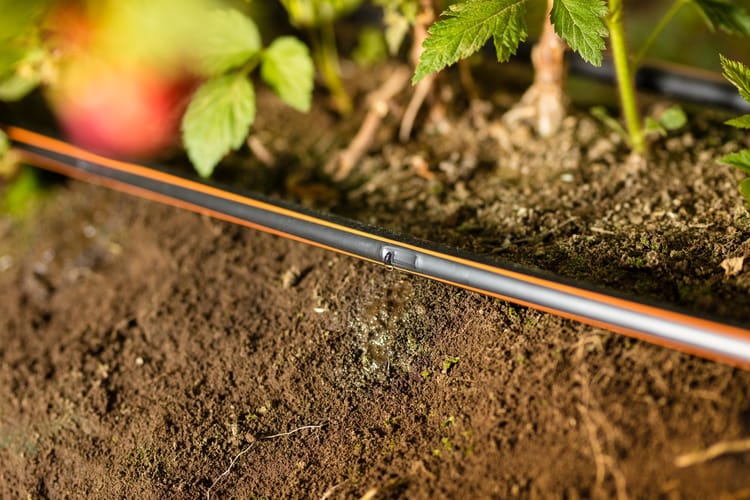What is Drip Irrigation?
Drip irrigation is the most efficient water and nutrient delivery system for crop irrigation. It delivers water and nutrients directly to the plant’s root-zone, in the right amounts, at the right time. This ensures that each plant gets exactly what it needs, when it needs it, for optimal growth. Thanks to this method of irrigation, farmers can produce higher yields while saving water, fertiliser, energy and even crop protection products.
How does it work?
Water and nutrients are delivered across the field in pipes called driplines featuring emitters known as drippers. Each dripper emits drops containing water and fertilisers, resulting in the uniform application of water and nutrients directly to each plant's root-zone, uniformly across an entire field.
Driplines are installed either on-surface or subsurface. Drippers are spaced along the drippline at a certain spacing. This spacing is determined by the requirements of the crop, plant spacing, and the width and depth-wetting ratio determined by the soil’s physical traits. The dripper is selected with a specific flow rate suited to the crop and conditions.
The concept of drip irrigation was introduced to the global irrigation industry in the 1960s, and ever since massive strides have been made in drip technology. Today, drippers are designed to overcome challenges such sloping fields, challenging water quality, root intrusion and more.

Why do Farmers Prefer Drip Irrigation?
The reason is simple. It does not only deliver greater return on investment than other irrigation methods, it also gives farmers an efficient and simple way to operate their farms and results in:
- Higher yields of consistent quality.
- Massive water savings: no evaporation, no run-off, no waste.
- 100% land utilisation: drip irrigates uniformly on any topography and soil type.
- Energy savings: drip irrigation works on low pressure.
- Efficient use of fertiliser and crop protection with no leaching.
- Less dependency on weather conditions which leads to greater stability and lower risk.
Why do Plants Prefer Drip Irrigation?
Just like people, plants need to receive water and nutrients in a balanced way. Nobody wants to or can eat a month's worth of food in one day, and the same goes for plants. This is why drippers apply water and nutrients frequently and in small doses, ensuring optimal growing conditions that helps produce the highest yields possible.
Here’s why plants are more productive with drip irrigation:
- High availability of water and nutrients.
- Doses of water and nutrients tailored to the plant’s development needs.
- No saturation and good soil aeration.
- Avoids high salinity caused by excessive fertiliser application.
- No wetting of foliage that can result in fungal diseases.

Why the World Needs Drip Irrigation
By 2050, there will be 10 billion people living on our planet, and 20% less arable land available per person to produce enough food. Include increasing water scarcity in this equation, and it’s clear why we need a way to increase both agricultural productivity and resource efficiency. This is where drip irrigation fits in, changing the economics of global agriculture by allowing farmers to produce more food per hectare and cubic metre of water.
- Reduce the impact of drought and climate change on food production.
- Avoid contamination of ground water and rivers caused by fertiliser leaching.
- Support rural communities, reduce poverty, reduce migration to cities.
FAQs

NEED HELP FINDING THE BEST SOLUTION FOR YOUR FARM?
Get in touch, and we can talk about what your crop needs.
